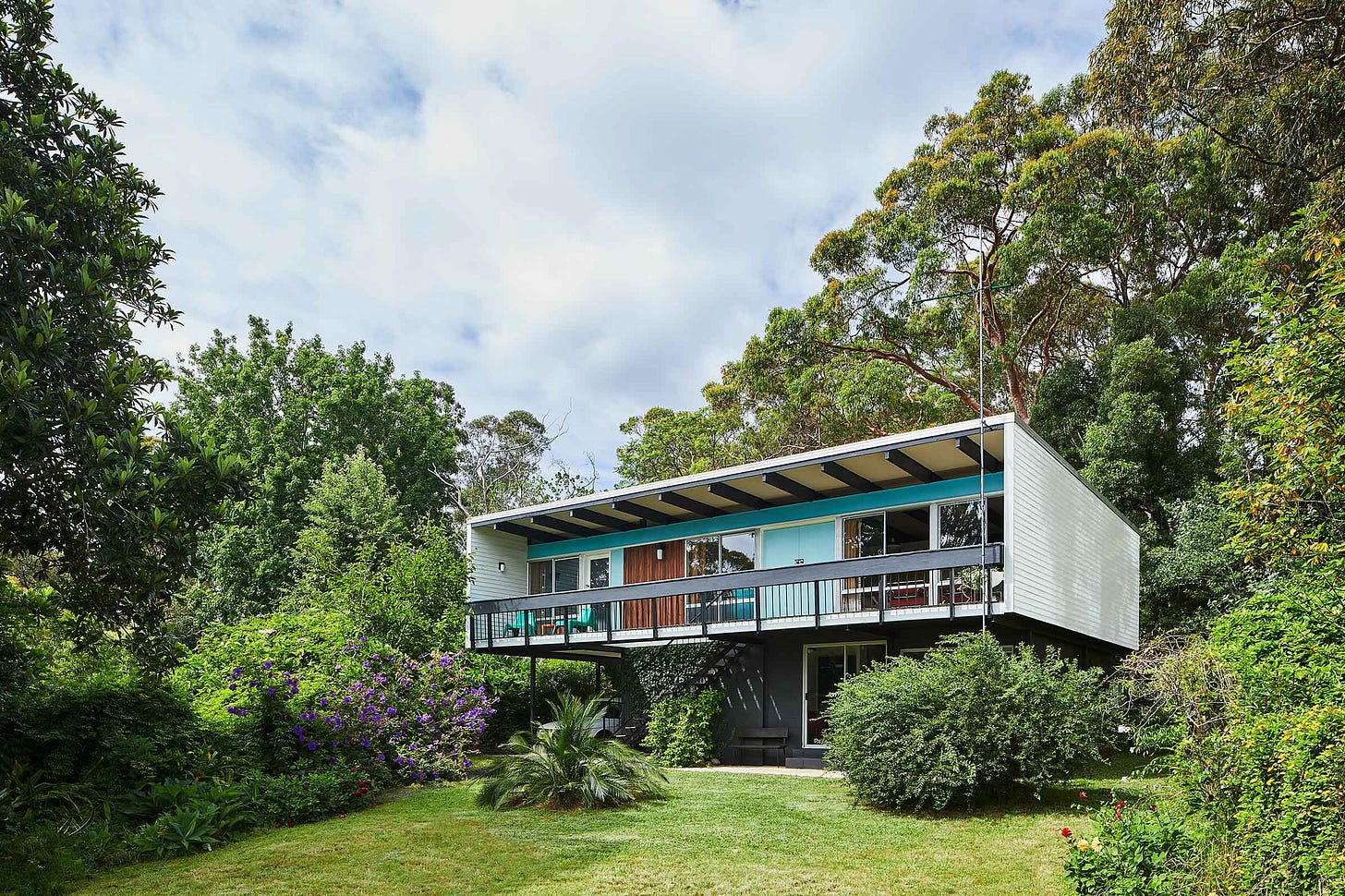A Mid-Century Elevated Pavilion Inspired by Le Corbusier
A 1960s Australian home renovated to stay true to its original design
Mid-century modern design has had a lasting impact on Australian architecture, shaping how homes connect with their surroundings. Like their American counterparts, Australian architects such as Robin Boyd, Harry Seidler, and Roy Grounds introduced ideas of openness, simplicity, and a strong relationship with nature—principles that continue to define good design today. One such example is “The Beachcomber Mk II”, designed by Nino Sydney in the 1960s. Its elevated structure, efficient layout, and connection to the surroundings made it an affordable and practical choice for the first family who lived there.
When I came across this renovation while covering “The New Modernist House”, a book we featured in November in Passion for Mid-Century Architecture Can Take You Far, I was struck by how much care had gone into keeping the house true to its original design. The story behind it is particularly compelling—not only did the owners take on the challenge of restoring it, but they also worked directly with the original architect. Their approach highlights why mid-century homes remain relevant today. Beyond their historical value, they offer a way of living that still makes sense—simple, functional, and closely connected to the environment.
Before diving into this story, I’d like to ask for two minutes of your time to fill out our first Substack survey. Your feedback will help us immensely in creating stories that match your interests. Thank you in advance for your contribution.
(Marco Guagliardo - Mid-Century Home’s Editor in Chief)
In the 1960s, Australia was facing a housing crisis. With a growing population and a shortage of skilled labour, affordable housing was in high demand. Project homes emerged as a solution, offering families the possibility of owning a well-designed house at a reasonable price.
Lend Lease Homes, a young development company at the time, was among the first to introduce a range of modern homes to the market. One of the most distinctive was the Beachcomber, designed by Nino Sydney.
Sydney, an émigré architect influenced by European modernism and Le Corbusier’s Villa Savoye, conceived the Beachcomber as an elevated pavilion that maximised natural light, airflow, and views. The design was simple yet effective, raised on slender supports to adapt to varied terrains, from coastal plots to steep mountainsides.
Keep reading with a 7-day free trial
Subscribe to Mid-Century Home to keep reading this post and get 7 days of free access to the full post archives.





